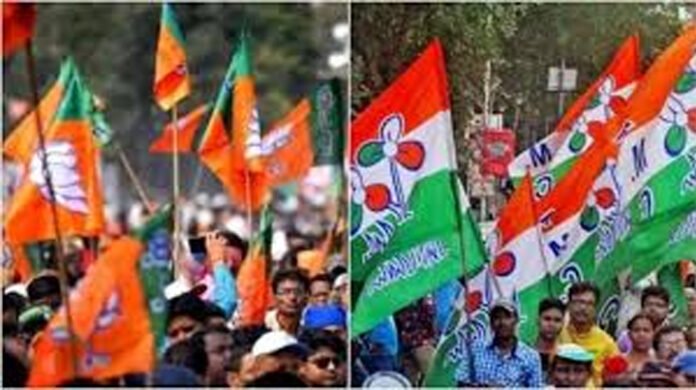The bustling city of Kolkata is currently under a heightened state of security as student organizations rally for the ‘Nabanna Abhiyan,’ a significant protest demanding the resignation of Chief Minister Mamata Banerjee. This march to Nabanna, the State Secretariat, comes in the wake of the tragic rape and murder of a female doctor at Kolkata’s RG Kar Hospital on August 9, an incident that has ignited fierce political and public outcry.
The Context of the ‘Nabanna Abhiyan’
The recent tragic event at RG Kar Medical College has become a focal point in West Bengal’s political landscape. BJP, known for its critical stance against the ruling TMC, has used this incident to intensify its campaign against the Mamata Banerjee administration. The party’s support for the student-led protest has added a layer of political complexity to the already volatile situation. The BJP’s campaign, dubbed ‘Nabanna Chalo Abhiyan,’ aims to spotlight alleged corruption and inefficiencies in Mamata Banerjee’s government.
Political Tensions and Responses
The clash between BJP and TMC over this incident has created a highly charged atmosphere in Kolkata. The BJP accuses the TMC of failing to ensure justice and of being involved in a broader corruption scheme. On the other hand, TMC has dismissed the protests as a political conspiracy orchestrated by the BJP to undermine the state government. This intense rivalry has further complicated the situation, fueling public sentiment and escalating the need for robust security measures.
Security Arrangements and Measures
In anticipation of the large-scale protest, Kolkata has been transformed into a fortress. The Kolkata Police and Howrah City Police have deployed over 6,000 personnel to maintain order and ensure safety. A three-layer security cordon surrounds Nabanna, making access extremely challenging for the protesting students. The layered security approach reflects the authorities’ commitment to managing potential disruptions and maintaining public order.
Nabanna: The Political and Administrative Hub
Nabanna, which serves as the State Secretariat, has significant political symbolism and practical importance. The building, located on the banks of the Hubli River in Howrah, replaced the historic Writers Building as the administrative center when Mamata Banerjee assumed office in 2011. The decision to shift to Nabanna was part of a broader administrative reorganization. The 14-storey Nabanna building, completed in 2013, houses critical offices including the Chief Minister’s office on the top floor, while the Chief and Home Secretary’s offices are situated on the 13th floor. Various other departments are spread across the fourth and fifth floors.
Historical and Political Significance
The establishment of Nabanna marked a significant shift in the administrative landscape of West Bengal. The building’s name, derived from the Bengali word ‘Nab,’ meaning ‘new,’ symbolizes a new era in state governance. This rebranding and relocation of the secretariat was a strategic move by Mamata Banerjee to signal a fresh start and to modernize the state’s administrative framework.
Implications of the Protest
The ongoing Nabanna Abhiyan has far-reaching implications for West Bengal’s political climate. The large-scale mobilization of students and political activists highlights the deep-seated frustration and demand for accountability within the state. The protest not only challenges the credibility of the TMC government but also puts pressure on Chief Minister Mamata Banerjee to address serious allegations of administrative failures and corruption.
Future Prospects and Political Ramifications
As the situation evolves, the future of the Nabanna Abhiyan will likely continue to impact West Bengal’s political dynamics. The effectiveness of the security measures will be crucial in preventing potential violence and maintaining public safety. Moreover, the outcome of this protest could influence upcoming political strategies and alignments in the region.
The Nabanna Abhiyan is more than just a protest; it represents a significant moment in West Bengal’s political history. With intense security measures in place and political tensions running high, the event underscores the urgent need for transparency and accountability within the state administration. The protests reflect a broader demand for justice and reform, marking a critical juncture in the ongoing political discourse in West Bengal.




















